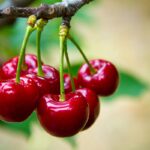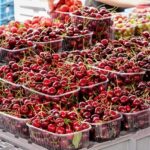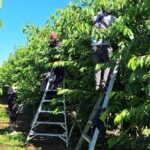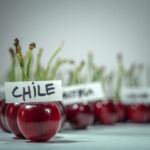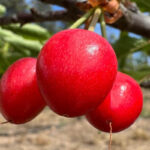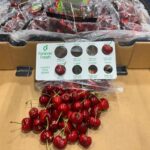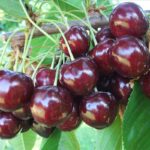CherryTech 2024: Chile's largest technical cherry industry event

More than 1,200 representatives from the Chilean cherry industry gathered at the second edition of the CherryTech convention.
The event is the country's most important gathering for cherry producers.
Attendees participated in three master classes and forums that featured 15 panelists that discussed topics ranging from key factors in cherry productivity, post-harvest, nutritional strategies to enhance fruit quality and condition, efficient water management in cherry cultivation and production stability, among others.
Organized by Smartcherry and Yentzen Group, the event saw the participation of 70 companies and was inaugurated by Chile's National Director of the Agricultural and Livestock Service (SAG), José Guajardo Reyes.
Gustavo Yentzen, director and founder of Yentzen Group, emphasized the importance of the fruit for the country in his opening remarks.
"Last season, despite adverse weather conditions, we once again surpassed 80 million boxes, a figure we could only dream of a few years ago," he said. "Cherry exports now represent just over 40% of Chile's fruit exports, and we know they will soon exceed the 50% mark."
"Half of all Chile's fruit exports will come from cherries, but reaching this figure will not be accidental; it requires work, effort, and investment," he added.
In just a few years, the Chilean cherry industry has grown significantly, positioning itself at an advantage in both technical and productive management worldwide.
Key factors in cherry productivity potential
The first master class was led by Carlos Tapia, M.Sc. agronomist, cherry production specialist consultant, technical director of Avium, and co-founder of Smartcherry.
Tapia explained that, in the last three seasons, Lapins, Santina, and Regina cherry varieties have led production in the country.
"Lapins continues to be and probably will be one of the most important and profitable varieties in our country," he said. "I would keep an eye on the growth of Regina and Santina, because I believe that at some point we will want to uproot them. The problem might not be varietal, but rather multifactorial due to weather conditions, management, seasons, and others."
Figures compiled by Avium and presented by Tapia indicate that by 2024, there will be 76,000 hectares of cherry plantations in Chile, an outstanding number in comparison to productivity before 2020, which was around 7 tons per hectare in productive orchards.
The industry has seen an increase of an average of 9 tons in the last four seasons, bringing Chile closer to countries like the United States and Turkey with an average of 11 tons.
80% of the cherry-growing area in Chile is located between the O'Higgins and Maule regions and projections suggest that in the coming years, 3,500 hectares could be planted by 2023, 5,000 hectares by 2024, and 7,000 hectares by 2026.
Last season was "special" for Chilean cherries. Tapia said that some of the components that most impacted the previous season's productivity are likely to influence the upcoming one.
Some of them are soil texture, chill hours (throughout the season), late-season precipitation (August-September-October), yield (kg/ha), thermal accumulation post dormancy, agro-climatic zone, and bee flight.
Follow all the coverage of CherryTech 2024 at Fresfruitportal.com.
















